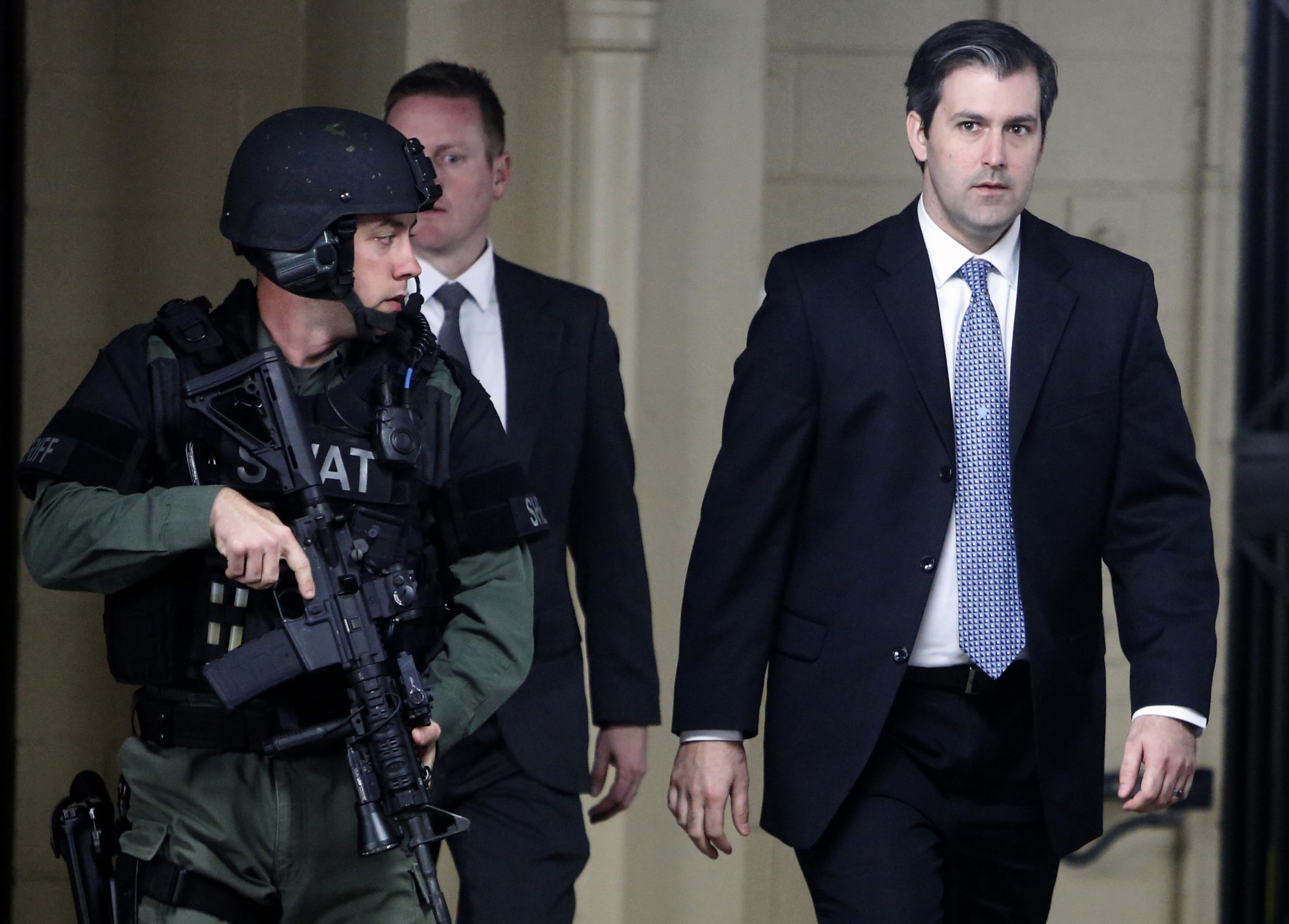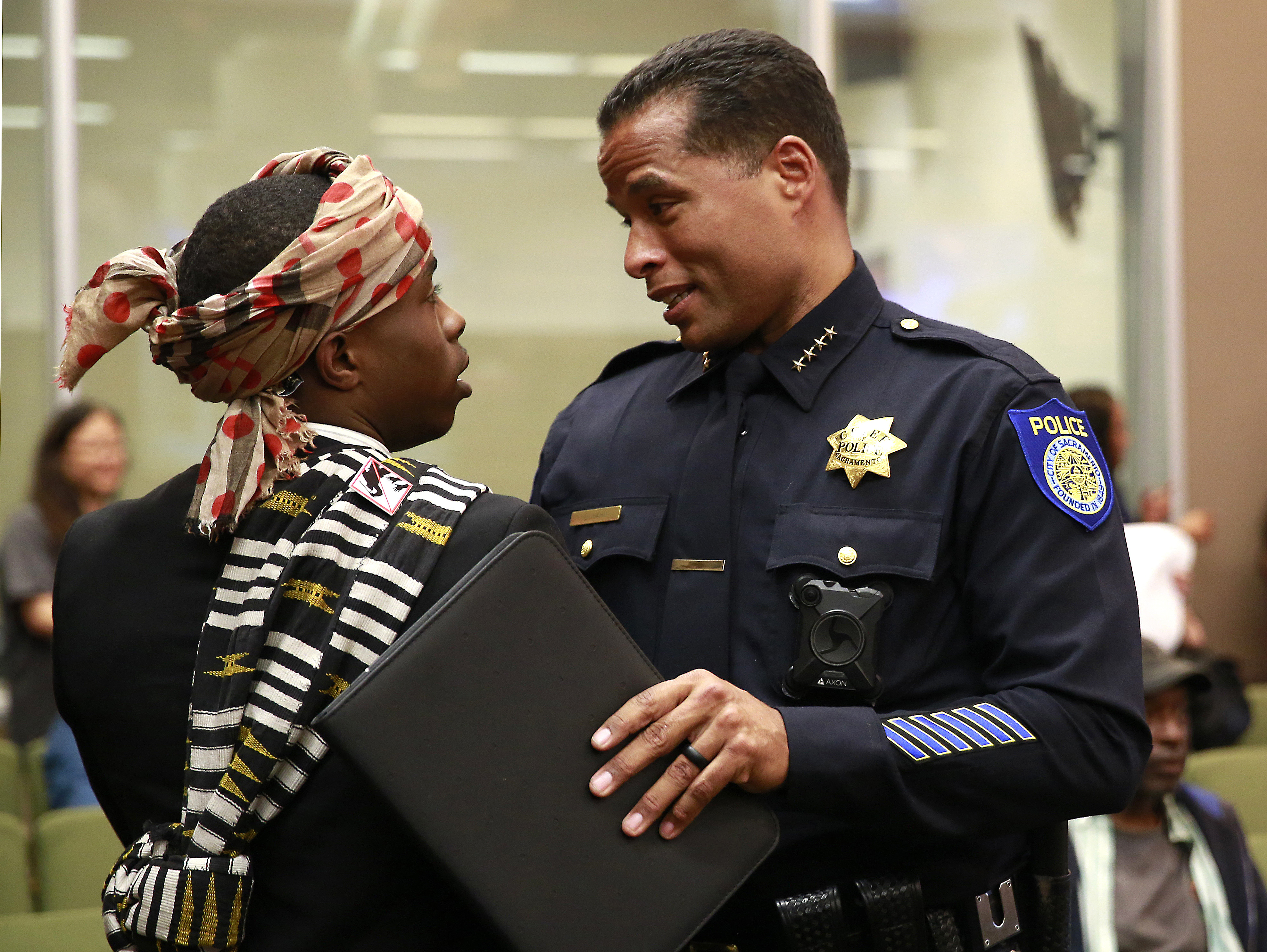Police officers start pursuing a suspect on foot, sometimes with their hands on their holsters or with their guns drawn. At some point, an officer fires at the suspect, who then collapses to the ground.
It’s happened to Stephon Clark in Sacramento, California; Maurice Granton in Chicago, Illinois; and Walter Scott in Charleston, South Carolina. And because of the ubiquity of body cameras, dash cameras, and bystander footage, their shootings were all caught on video.
Videos by VICE
Eighty-eight of the 584 people killed by police so far this year were running away from officers, according to data collected by the Washington Post. But whether police can legally shoot a fleeing suspect depends on a patchwork of state laws governing the use of lethal force. Police can generally shoot to kill if they “reasonably” fear for their lives or the safety of others, but specific circumstances — like whether the suspect was armed or had a violent criminal history — also affects if the officer can be held liable in many cases.
For years, cops had to demonstrate they had “probable cause” to believe a suspect was dangerous before using deadly force. But a landmark Supreme Court case in 1989 changed that. In a 6-3 decision, the justices determined officers could shoot to kill if they “reasonably” feared for their lives — a lower and more subjective standard.
States, however, still have the power to set their own laws governing when police can use deadly force. Right now, 42 states have a total of 58 different statutes, according to Seth Stoughton, a former police officer and assistant professor at the University of South Carolina’s School of Law. The majority of the laws align with the Supreme Court’s standard, but some states give police even more leeway.
READ: Police shoot far more people than anyone realized, a VICE News investigation reveals
Florida’s criminal code, for example, has what’s called a “fleeing felon” law, which give cops the legal authority to use deadly force if they need to stop someone who’s committed a felony from escaping arrest. That rule doesn’t align with a 1985 Supreme Court decision, where justices concluded police cannot shoot fleeing suspects, specifically, unless they pose a threat to their life or someone else’s.
“In Florida, for example, the theft of a stop sign is a felony. So is the theft of 2,000 pieces of citrus fruit,” Stoughton said. Felony theft in Florida also includes stealing any commercially farmed animal, which could include a chicken or a bee colony, and stealing fire extinguishers.
“Fleeing felon” laws give cops the legal authority to use deadly force if they need to stop someone who’s committed a felony from escaping arrest.
In other words, if someone in Florida stole a bunch of citrus fruit or bees — even without a weapon — and then took off running, a police officer could shoot that individual and later claim they had no other means of apprehending the suspect to avoid criminal charges. The officer, however, could still be held civilly liable for damages.
Two deputies from Marion County Sheriff’s Office in Florida just returned to patrol duty after shooting and killing Dustin Odom, a white 30-year-old male on drug offender probation for felony petit theft. He violated his court ordered parole by fleeing from a rehab facility and “violently confronted the officers,” according to the sheriff’s department.
California’s deadly force statute is similar to Florida’s but requires that a resistant or fleeing suspect have been charged with a felony — instead of just having committed one — before the officer can use deadly force.
Also in California — as well as Idaho, Mississippi, New Mexico, and Washington — officers can use deadly force when “necessary” or “reasonable” to overcome “actual resistance,” the meaning of which varies among the states.
The death of Walter Scott
The shooting of an unarmed black man in April 2015 brought the question of when police can legally shoot a fleeing suspect sharply into public view.
Former North Charleston police officer Michael Slager, who’s white, originally contended in his police report that he feared for his life because a black man named Walter Scott grabbed his Taser. (South Carolina doesn’t have a deadly force statute, but under state case law, officers can use deadly force on a suspect, fleeing or otherwise, if they reasonably feared for their life.)
But shaky cellphone video of the shooting contradicted Slager’s account; the footage showed Scott running away as Slager fired eight shots at his back. Slager was ultimately charged with murder, convicted, and sentenced to 20 years in prison.
Scott was one of 1,134 killed by police that year, according to the Guardian, while Slager was one of just 17 officers charged nationwide. (Indictments of officers nearly tripled in 2015 compared to previous years, which experts linked to the uptick in video evidence.)

Of the 88 fleeing suspects shot by police so far this year, nine were unarmed, like Scott was. But officers have been charged with voluntary manslaughter or criminal homicide in just two of the cases: the death of Anthony Marcel Green, a 33-year-old unarmed black man, after he fled a traffic in Kingsland, Georgia, and Antwon Rose Jr., a 17-year-old unarmed black teenager in East Pittsburgh, Pennsylvania.
The officers who killed Green were wearing body cameras, and a bystander filmed Rose’s death from a distance.
Rose was a passenger in a car that East Pittsburgh police pulled over the evening of June 19 on suspicion that the vehicle was involved in a drive-by shooting earlier in the day. Rose fled the scene, and officer Michael Rosfeld chased him and opened fire and struck him twice in the back and once in the arm.
Rose was unarmed, but Rosfeld initially thought Rose had a gun-like object in his hand. He later contradicted his own statements and one week later, was charged with criminal homicide. Under Pennsylvania law, officers can only shoot a fleeing suspect if that suspect poses an immediate threat, possesses a lethal weapon, or has previously used or threatened lethal violence.
“You do not shoot somebody in the back when they are not a threat to you,” said Allegheny County District Attorney Stephen A. Zappala Jr, when announcing the charges against Rosfeld.
Investigations into five other deadly shootings where the suspect was fleeing and unarmed this year are ongoing, including into the death of Stephon Clark, who was shot and killed in his own backyard after running from Sacramento police. He was carrying only a cell phone, which cops originally thought was a “toolbar.”

Following Clark’s death, California lawmakers introduced legislation to change the legal standard police are held to when they kill civilians from “reasonable fear” to one where deadly force should be used only when “necessary to prevent imminent and serious bodily injury or death.”
READ: Sacramento police can’t explain why they muted their body cameras after killing an unarmed black man
In other police-involved shootings of fleeing suspects this year, prosecutors have so far declined to press charges.
The district attorney overseeing Minneapolis announced Monday that the officers who shot and killed Thurman Blevins Jr., a 31-year-old black man who fled police, would not face charges. Blevins, however, appeared to have been armed; a gun-like object was discovered next to his body after police shot him in the back.
After seeing video of the shooting, community members argued that Blevins still didn’t pose a threat to the officers who shot him. But under the “reasonable fear” standard, it would be hard to make a case to prosecute the officers involved.
“It appears that he pulled the gun out as he’s running down that last alleyway. He could have turned around in a split second and shot the officers,” said Phil Stinson, a criminologist at Bowling Green State University and a national expert in police misconduct. “Would a reasonable officer in that situation be justified in using deadly force? I think the answer is ‘yes.’”
More
From VICE
-

Photo: dbvirago / Getty Images -

Credit: DuckDuckGo -

Photo: Oleg Breslavtsev / Getty Images -

Photo: HEX / Getty Images
